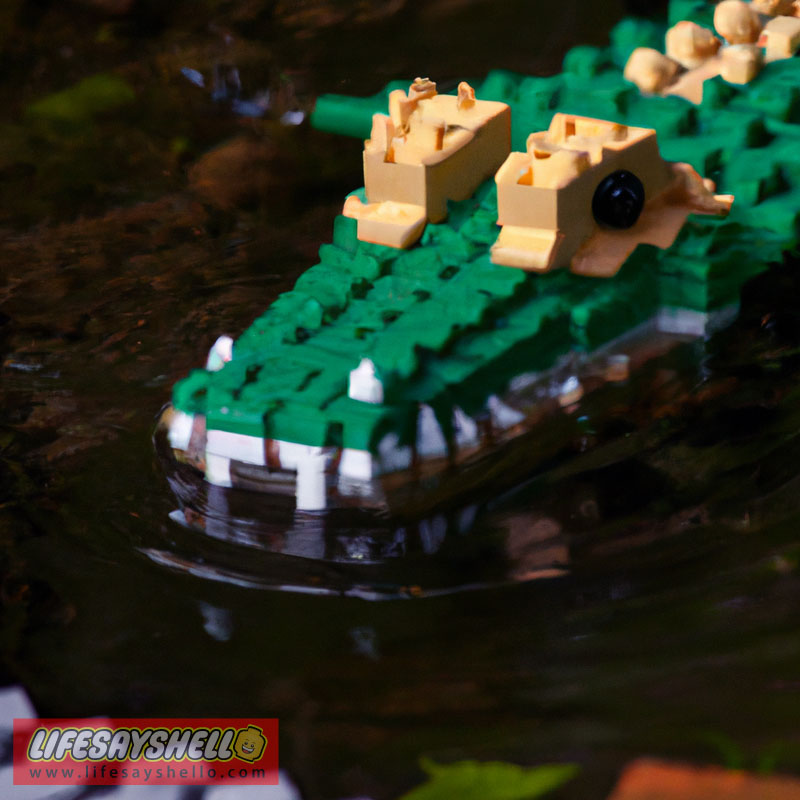Are There Crocodiles in Florida? Discovering the American Crocodile's Habitat and Lifestyle in the Sunshine State

Have you ever wondered if there are crocodiles lurking in the waters of Florida? Join us as we dive into the fascinating world of the American Crocodile and explore their intriguing presence in the Sunshine State.
Introduction
Florida, known for its beautiful beaches, warm climate, and diverse wildlife, is home to a variety of reptiles, including alligators. But have you ever wondered if there are crocodiles living in the Sunshine State? In this article, we'll uncover the truth about the presence of crocodiles in Florida and learn about their habitats, behavior, and how they've adapted to thrive in this unique environment.
The American Crocodile
The American Crocodile (Crocodylus acutus) is a species of crocodile found in the Americas, ranging from the southern tip of Florida all the way down to South America. This fascinating reptile can grow up to 20 feet in length and is known for its distinctive V-shaped snout, which sets it apart from its close relative, the American Alligator.
While the American Crocodile is not as common in Florida as the American Alligator, they do indeed call the state home. In fact, Florida is the only place in the United States where you can find both alligators and crocodiles coexisting in the wild. So, the answer to our initial question is a resounding yes – there are crocodiles in Florida!
Crocodile Habitats in Florida
Florida's diverse ecosystems provide a range of habitats suitable for crocodiles. These reptiles prefer brackish water (a mix of saltwater and freshwater) and coastal areas, making Florida's wetlands, mangroves, and estuaries ideal homes for them.
Here are some specific locations in Florida where you might encounter an American Crocodile:
Everglades National Park
Everglades National Park is a vast, protected wilderness that covers over 1.5 million acres in southern Florida. This unique ecosystem is a haven for countless plant and animal species, including the American Crocodile. The park's brackish water habitats, such as mangroves and estuaries, provide the perfect environment for crocodiles to thrive.
Florida Bay
Florida Bay, located between the southern tip of Florida's mainland and the Florida Keys, is another prime location for American Crocodiles. This large body of water is a mixture of saltwater and freshwater, creating a brackish environment that crocodiles find appealing. The bay's mangrove islands and shallow waters also provide ample opportunities for these reptiles to bask in the sun and hunt for food.
Biscayne Bay
Biscayne Bay, situated along the eastern coast of Florida near Miami, is yet another hotspot for American Crocodiles. This expansive bay features a diverse ecosystem, including mangroves, seagrass beds, and coral reefs, providing a suitable habitat for crocodiles to thrive.
Turkey Point Nuclear Generating Station
Surprisingly, the cooling canals surrounding the Turkey Point Nuclear Generating Station in Miami-Dade County have become a popular nesting site for American Crocodiles. The warm water in these canals provides an ideal environment for crocodile eggs to incubate, and the area is protected from human disturbance, making it a safe haven for these threatened reptiles.
Crocodile Behavior and Adaptations in Florida

In order to survive in Florida's unique environment, American Crocodiles have developed several adaptations and behaviors.
Living in Brackish and Saltwater Habitats
While many crocodile species prefer freshwater environments, the American Crocodile is perfectly adapted to live in both brackish and saltwater habitats. They have special glands in their mouths that allow them to excrete excess salt, enabling them to thrive in Florida's coastal areas.
Feeding Habits and Prey Species
American Crocodiles are opportunistic predators, meaning they'll eat just about anything they can catch. In Florida, their diet consists mainly of fish, birds, and small mammals. They have also been known to scavenge for food when the opportunity arises.
Breeding and Nesting Habits
Crocodile mating season in Florida typically occurs between January and May. After mating, female crocodiles will build a nest by digging a hole in the ground or piling up vegetation. They'll then lay between 30 and 60 eggs, which will incubate for about 85 days before hatching. Interestingly, the temperature of the nest determines the sex of the hatchlings – warmer temperatures produce more males, while cooler temperatures result in more females.
Conservation Efforts and Human-Crocodile Interactions
The American Crocodile is considered a threatened species in Florida, with only an estimated 2,000 individuals remaining in the state. Conservation efforts have been put in place to protect these fascinating reptiles and their habitats.
Conservation Efforts
Organizations like the Florida Fish and Wildlife Conservation Commission (FWC) and the U.S. Fish and Wildlife Service are working together to monitor crocodile populations, protect their habitats, and educate the public about these amazing creatures. The American Crocodile has been listed as a threatened species under the Endangered Species Act since 1975, and their populations have slowly been recovering thanks to these conservation efforts.
Tips for Safely Coexisting with Crocodiles in Florida
While encounters between humans and crocodiles are relatively rare, it's essential to know how to safely coexist with these reptiles.
- Keep your distance: If you encounter a crocodile, maintain a safe distance of at least 50 feet. Never approach or attempt to feed a crocodile.
- Protect your pets: Keep your pets on a leash and away from the water's edge in areas where crocodiles may be present.
- Be cautious near the water: Avoid swimming in areas known to have crocodile populations, and be particularly cautious during their active hours, which are typically dawn and dusk.
Conclusion
In conclusion, the American Crocodile does indeed call Florida home, and they can be found in various locations throughout the state. These fascinating reptiles have adapted to thrive in Florida's unique environment, and conservation efforts are in place to protect their populations. By understanding their behavior and respecting their natural habitats, we can safely coexist with these incredible creatures in the Sunshine State.




Comments